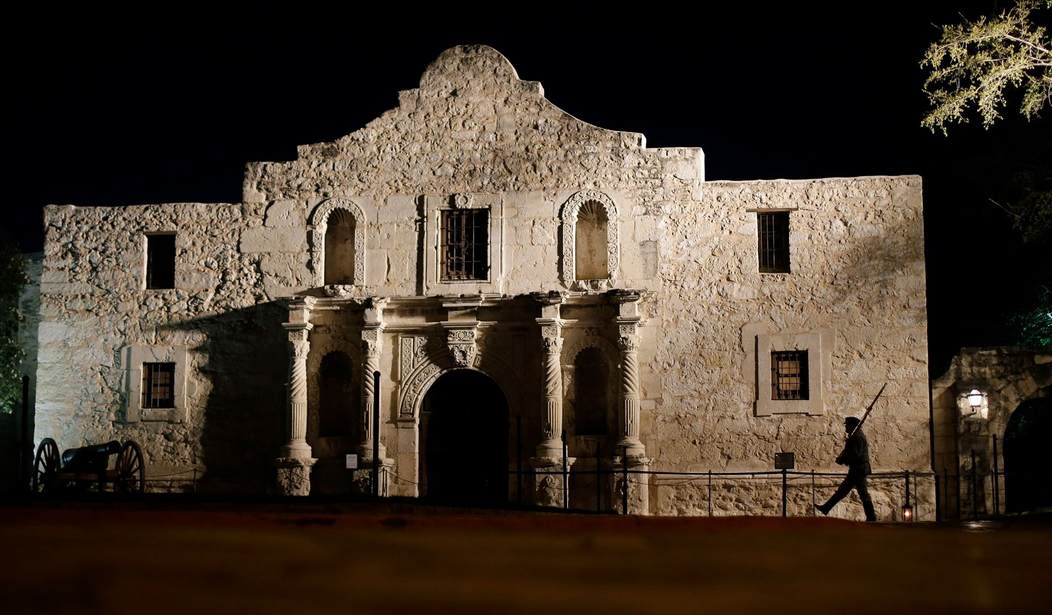A few days back a paragraph in the media caught my eye. It came in the context of the now “reset” project to revamp Alamo Plaza to make it less of a circus and more of a reverent space befitting the battle and sacrifice that took place there.
The San Antonio Express-News story deals with the current state of play, and includes this claim from local activist and university professor Mario Salas. I should note, he’s not a history professor.
Mario Salas, a member of the county’s historical commission who has taught African American studies, said most people don’t know that Santa Anna had an all-Black regiment here in 1836 because that part of the story has been marginalized.
The claim that Santa Anna had an all-Black regiment in Texas in 1836 had me scratching my head. I produced and co-wrote the successful Bowie: Man – Knife – Legend exhibit at the Alamo in 2017. That exhibit attracted about 600,000 visitors, making it one of the Alamo’s most successful exhibits in its history.
While producing that exhibit, I researched Santa Anna’s army and its movements around Texas extensively. I never came across any all-black regiment. I’ve continued my research since then and have never come across such a unit.
To satisfy my curiosity about this I reached out to Dr. Gregg Dimmick. Dr. Dimmick led successful archaeological investigations in southern Texas in the 1990s. Those investigations unearthed numerous artifacts that, combined with his extensive research that included traveling to Mexico to scour original source documents, allowed perhaps the most detailed tracking of Santa Anna’s army as it moved in and retreated from Texas after its defeat at San Jacinto. His book on the retreat, Sea of Mud: The Retreat of the Mexican Army After San Jacinto, an Archaeological Investigation, is extremely well-researched, well-written, and deeply detailed.
I emailed Dr. Dimmick and asked him whether the all-black regiment existed. He responded quickly. “Bryan, I have recently finished writing a three-volume work on the Mexican army in the Texas Revolution,” he wrote. “It should be published in the next year or so. I have many documents from the Mexican military archives that have not been previously published or translated. I have seen multiple unit rosters and lists of the various units involved. I have seen absolutely nothing about any such unit in the Texas Revolution.”
Neither had I. Neither had any of the other Texas history experts I’ve consulted about this and I have never seen it documented. Dr. Dimmick did add that there may have been a black Cuban unit active in Texas during the Spanish period, but that’s well before Santa Anna was dictator or leader of Mexico’s army. There was an all-black unit from Cuba that fought in the American Revolution called the Morenos Libres. That, too, was a Spanish unit. Santa Anna had not been born yet (1794 was his birth year). Mexico was not a country yet (it achieved independence from Spain in 1821). Different revolution, different nations, different time.
Salas has made the claim before, and it seems to be part of an effort to somehow rehabilitate Santa Anna. Rehabilitating Santa Anna is a woke and revisionist political project.
As I’ve written before, there’s a concerted effort to cast the Texas revolutionaries as if they were fighting for slavery and possibly even white supremacy. In order to make that stick, Santa Anna has to be recast as, if not outright good, then at least not a terrible butcher. The Texas Revolution has to be cut off from the rest of the wars that engulfed Mexico at the same time, so that it can be cast as a war based on slavery and race. The considerable Tejano contribution to the revolution must be erased. The political argument that drove the war, federalists vs. centralists, must be omitted from the discussion. The complex war must be oversimplified and distorted to the point that the facts cease to drive the story.
But the facts are stubborn. The Texas Revolution was one section of a much wider war that spread across much of northern Mexico and included states far from Texas including Yucatan. The war’s primary issue was Santa Anna’s betrayal of the federalists and his abrogation of the 1824 Mexican constitution, which was federalist, as he centralized power unto himself. He did away with state legislatures and even redrew state boundaries into military districts. When Zacatecas rebelled in 1835, Santa Anna put it down and then put it to the sword in one of his several massacres. This action informed the Texian and Tejano revolutionaries what awaited them should Santa Anna defeat them.
Tejanos were statistically slightly more likely to have fought against Santa Anna in the revolution than the Anglos living in Texas at the time, according to Texas historian and author Dr. Jody Edward Ginn. A Tejano who was born at the Alamo, Jose Toribio Losoya, may have been the last man standing in defense of the Alamo as Santa Anna’s army assaulted and overwhelmed it. A Mexican who had served as the country’s treasury secretary, Lorenzo de Zavala, sided with the revolution, as did many Mexicans in Texas and well beyond — across multiple Mexican states at the time. He was later elected vice president of the Republic of Texas, strongly suggesting that the war was not fought over race. The fact that multiple states rebelled, states where slavery had already been outlawed, says outright that the war across Mexico was not primarily driven by slavery. Slavery was an issue in Texas, but it was not the primary issue.
Santa Anna was no liberal humanitarian. He was a brutal, power-hungry dictator and a butcher. His actions triggered the war. Many Mexicans rose up against him to fight for their freedom. Texas was part of that uprising. Seeing Santa Anna’s actions in a modern light does not rehabilitate him. He could be credibly accused of pursuing ethnic cleansing in Texas, and of Saddam Hussein-like mass murder of his own people elsewhere.
The facts are important. The Alamo project currently underway is being pulled by some who wish to distort the history for their own contemporary purposes, not necessarily to get to the truth. This fight over the past is very much a fight for how Texas history will be taught and thought of in the future.









Join the conversation as a VIP Member